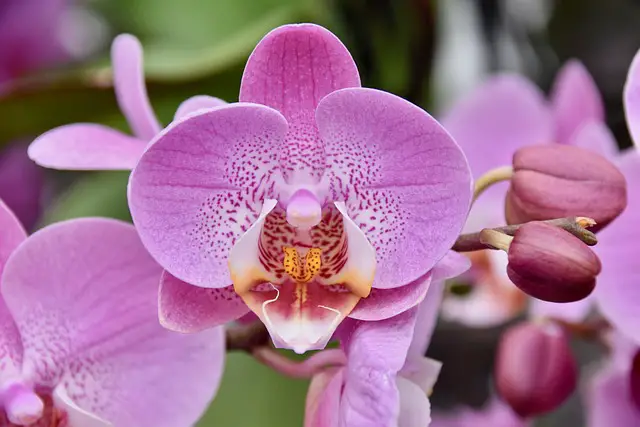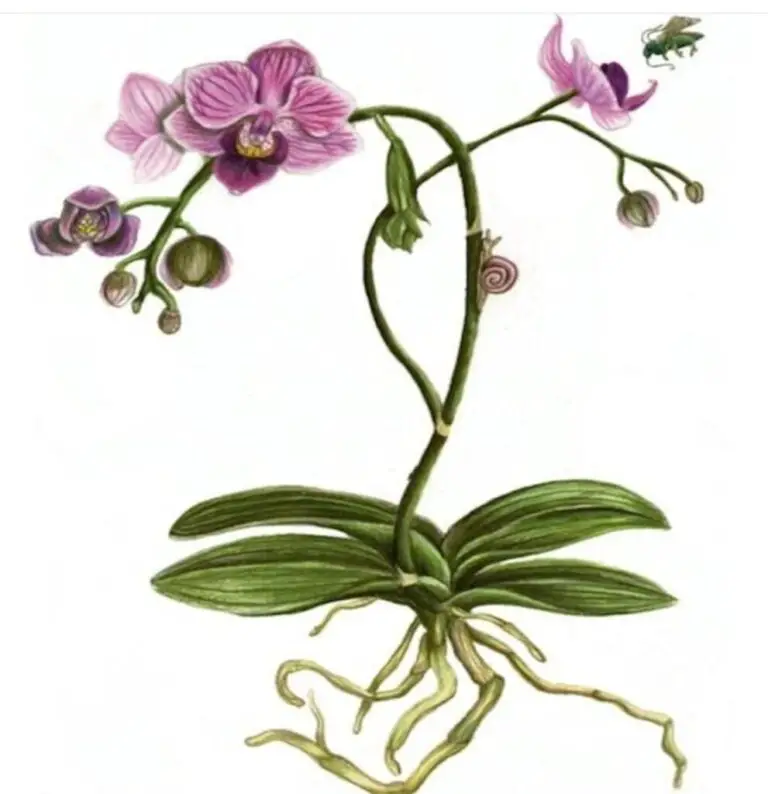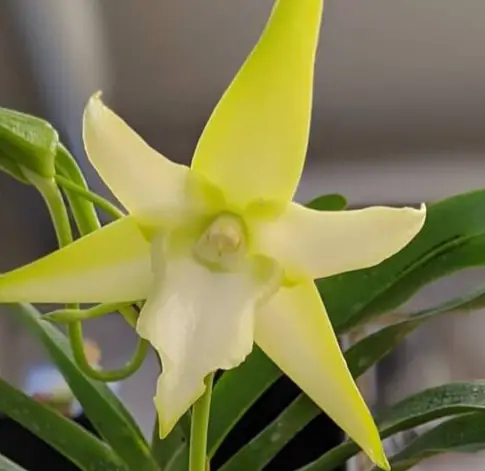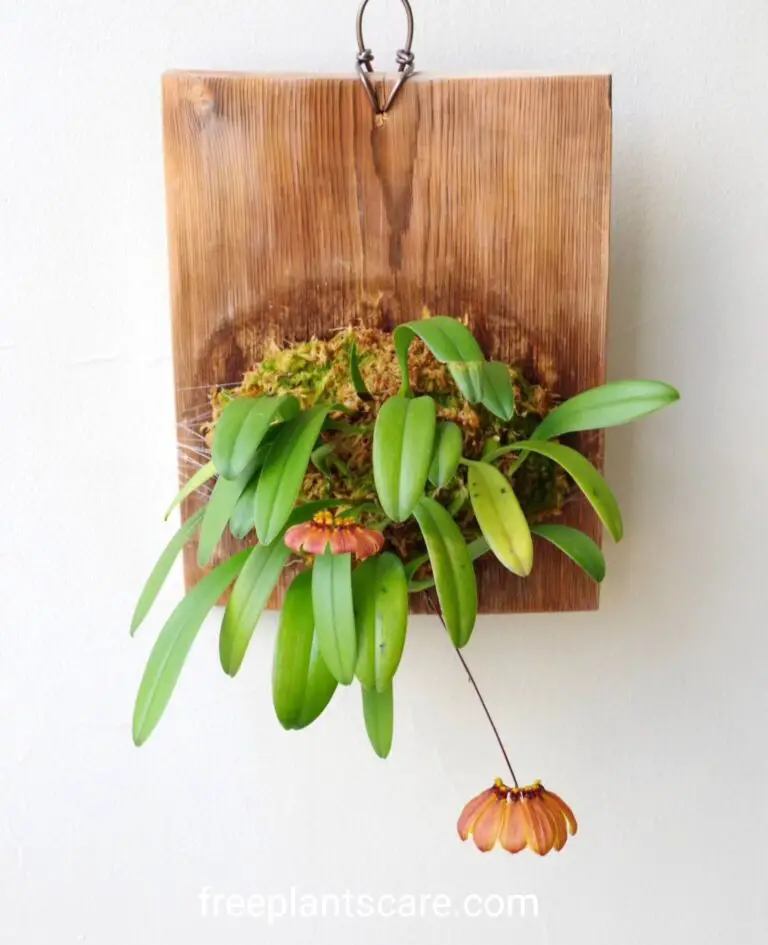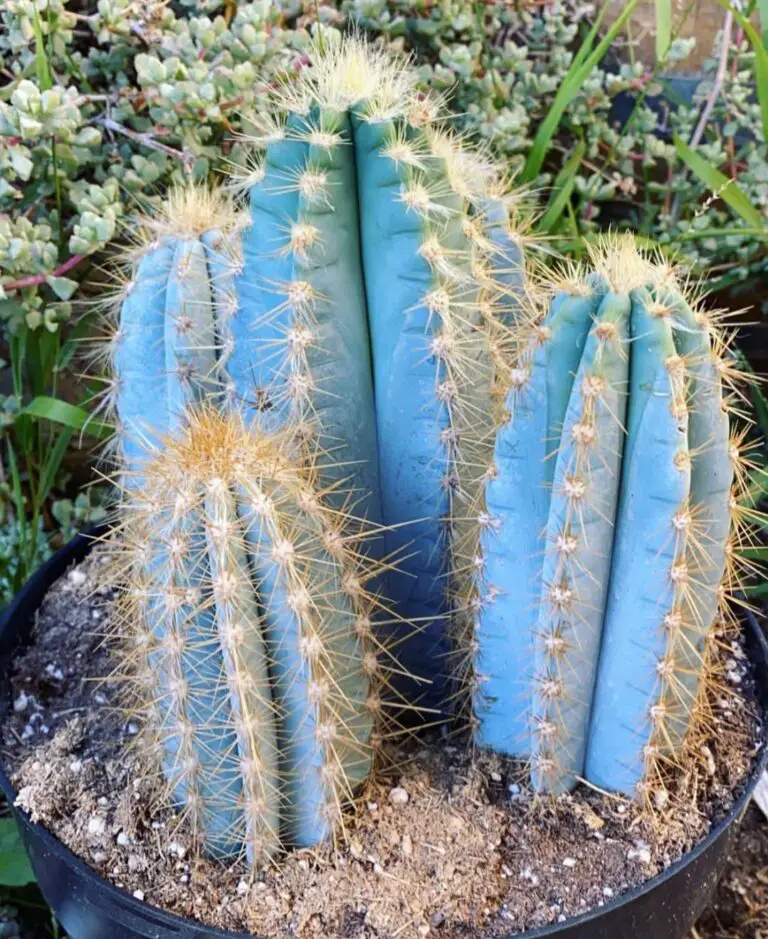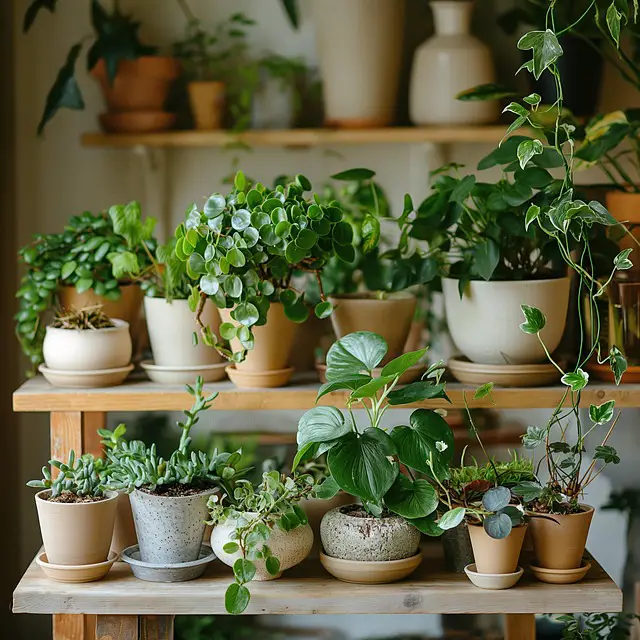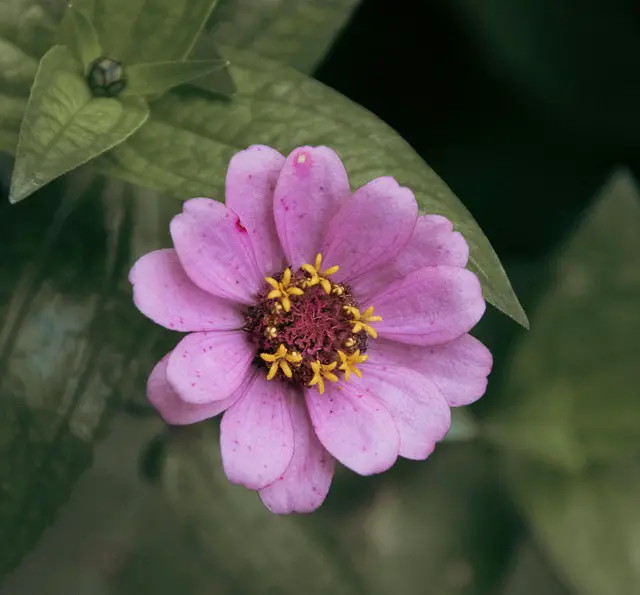Orchid Species and Hybrids : Orchids are one of the largest and most fascinating plant families, with over 25,000 species growing in diverse habitats worldwide. From the vibrant Phalaenopsis to the exotic Cattleya, each species has unique characteristics and care needs.
Sometimes, you buy a very beautiful orchid from a supermarket, bring it home, and care for it, only to find that it suddenly dies. There may be many reasons for this, but one possible cause is that it is a species that is very difficult to care for.
Hybrids, created by crossing different species, combine the best traits—bigger blooms, longer flowering periods, and improved resilience. Whether you’re starting a collection or simply exploring the world of orchids, this guide will help you understand the key differences between species and hybrids and how to care for them successfully.

- 1 Orchid Species vs. Hybrid Orchids: Care Comparison Table
- 2 10 varieties of orchid species
- 3 10 varities of orchid hybrids
- 4 What are the pros and cons of Species and hybrids of orchids
- 5 Pros of orchid species:
- 6 Cons of orchid species:
- 7 Pros of orchid hybrids:
- 8 Cons of orchid hybrids:
- 9 Which species or hybrids are good for beginners?
- 10 FAQ
Orchid Species vs. Hybrid Orchids: Care Comparison Table
| Care Factor | Species Orchids | Hybrid Orchids |
|---|---|---|
| Origin | Naturally occurring in the wild | Created by crossbreeding species for desirable traits |
| Ease of Care | More challenging; require specific conditions | Easier; bred for adaptability |
| Light Requirements | Varies by species; some need high light (e.g., Cattleya), others need low light (e.g., Masdevallia) | Generally adaptable to different light conditions |
| Watering Needs | Species may have precise watering needs (some prefer drying out, others need constant moisture) | Often more forgiving; can tolerate occasional watering mistakes |
| Humidity Levels | Some species require high humidity (e.g., Vandas need 60–80%) | Hybrids are usually more tolerant of average household humidity (50–70%) |
| Temperature Tolerance | Some species are very temperature-sensitive (cool, intermediate, or warm growers) | Most hybrids are bred to tolerate a wider range of temperatures |
| Fertilization | Some require specific nutrient levels (e.g., low-nitrogen fertilizer for certain species) | Most hybrids respond well to general orchid fertilizer |
| Blooming Frequency | Species may bloom only once a year and require specific triggers | Many hybrids bloom multiple times a year |
| Pest & Disease Resistance | Some species are prone to fungal and bacterial issues | Hybrids are often bred for stronger disease resistance |
| Repotting Needs | Some species dislike being disturbed and struggle after repotting | Hybrids are usually more adaptable to repotting |
| Fragrance | Many species orchids have strong fragrances | Some hybrids retain fragrance, but others may lose it |
| Lifespan | Can live for decades with proper care | Also long-lived but may lose vigor over multiple generations |
| Availability | Some species are rare, expensive, and may require permits to own | Hybrids are widely available and affordable |
| Best for Beginners? | Only if they can provide precise conditions | Yes, hybrids are ideal for beginners |
Go for hybrids if you want an easy-care, adaptable orchid that blooms frequently.
Choose species if you enjoy a challenge and can provide the specific care conditions they require.
10 varieties of orchid species
There are thousands of orchid species, but here are 10 examples of some popular and unique ones:
Phalaenopsis orchids: Also known as “moth orchids,” they are popular indoor plants with long-lasting, colourful blooms.
Cattleya orchids: Known for their large, fragrant flowers, these orchids are often used in corsages and as cut flowers.
Dendrobium orchids: These orchids come in a wide variety of colours and shapes and are commonly used as potted plants.
Oncidium orchids: With their distinctive sprays of small, brightly coloured flowers, these orchids are sometimes called “dancing ladies.”
Paphiopedilum orchids: These orchids have a unique slipper-shaped lip, giving them the nickname “lady slipper orchids.”
Vanda orchids: These orchids are known for their large, showy flowers and are commonly grown in hanging baskets.
Brassia orchids: With long, spidery petals resembling spider legs, these orchids are sometimes called “spider orchids.”
Miltoniopsis orchids: known for their delicate, fragrant blooms, these orchids are often grown indoors and require cool temperatures.
Masdevallia orchids: These orchids have unique, intricate flowers with bright colours and bold patterns.
Epidendrum orchids: With over 1,000 species, these orchids have a wide range of colours and shapes and can be found in a variety of habitats, from rainforests to deserts.
10 varities of orchid hybrids
There are countless orchid hybrids, but here are 10 examples of some popular and unique ones:
Phalaenopsis x Doritaenopsis: A hybrid between Phalaenopsis and Doritis orchids, resulting in large, long-lasting flowers in a wide range of colors.
Cattleya x Laelia: A hybrid between Cattleya and Laelia orchids, producing large, fragrant flowers in vibrant colors.
Brassocattleya: A hybrid between Brassavola, Cattleya, and Laelia orchids, producing large, colorful flowers with a sweet fragrance.
Vanda x Ascocenda: A hybrid between Vanda and Ascocentrum orchids, resulting in large, showy flowers in bright colors.
Miltonia x Oncidium: A hybrid between Miltonia and Oncidium orchids, producing delicate, fragrant flowers in a range of colors.
Paphiopedilum x Phragmipedium: A hybrid between Paphiopedilum and Phragmipedium orchids, resulting in unique, slipper-shaped flowers in shades of green, brown, and purple
Zygopetalum x Miltonia: A hybrid between Zygopetalum and Miltonia orchids, producing large, fragrant flowers in shades of purple, green, and white.
Dendrobium x Cattleya: A hybrid between Dendrobium and Cattleya orchids, producing large, colorful flowers in a range of shapes and sizes.
Odontocidium: A hybrid between Odontoglossum, Oncidium, and Miltonia orchids, producing showy flowers in a wide range of colors
Brassolaeliocattleya: A hybrid between Brassavola, Laelia, and Cattleya orchids, producing large, fragrant flowers in bright colors
What are the pros and cons of Species and hybrids of orchids
Here are some pros and cons of orchid species and hybrids:
Pros of orchid species:
They are natural and have evolved to thrive in specific environments, which means they can be relatively easy to care for if grown in the right conditions.
They often have unique and interesting characteristics that are specific to their species, such as specific flower shapes or growth habits.
They can be great for collectors and enthusiasts who appreciate the diversity of orchids and want to experience their natural beauty
Cons of orchid species:
Some orchid species can be difficult to cultivate and require very specific conditions, such as high humidity, specific light requirements, or specific temperatures.
Some species may be rare or endangered in their natural habitat, which means they may not be readily available for purchase or may require special permits to acquire.
Some species may have limited appeal to people who are looking for more showy or unique plants
Pros of orchid hybrids:
Hybrids can combine the best traits of two or more orchid species, resulting in new and unique plants with desirable characteristics such as larger blooms or more vibrant colors.
Hybrids can be easier to cultivate than some species, as they may have more adaptable growing requirements and may be more tolerant of a wider range of conditions.
There is a wide range of orchid hybrids available, which means there are many options for collectors and enthusiasts to choose from.
Cons of orchid hybrids:
Some hybrids may be less hardy or less resilient than their parent species, which means they may require more specialised care.
Some hybrids may be less unique or less interesting than their parent species, particularly if they are overbred and have become too similar to other orchids.
Hybridization can sometimes result in genetic defects or sterile plants that cannot reproduce, which may limit their long-term viability as plants.
Which species or hybrids are good for beginners?
Both orchid species and hybrids can be good for beginners, but some species and hybrids may be easier to care for than others.
For beginners, it is generally recommended to start with orchids that are more forgiving of growing conditions and require less specialised care. Phalaenopsis orchids are a good choice for beginners, as they are relatively easy to care for and can adapt to a variety of growing conditions. Other good choices for beginners include Paphiopedilum orchids, Dendrobium orchids, and Oncidium orchids.
As for orchid hybrids, some are more forgiving and easier to care for than others. It’s a good idea for beginners to choose hybrids that are known to be more adaptable and easier to grow, such as Phalaenopsis x Doritaenopsis, Brassolaeliocattleya, or Odontocidium.
Ultimately, the best choice for a beginner will depend on their specific growing conditions and personal preferences. It’s always a good idea to do research and consult with experts or experienced growers to choose the best orchid for your particular situation.
FAQ
What are orchid species and hybrids?
Orchid species and hybrids refer to two different categories of orchids. Species orchids are naturally occurring and have evolved over thousands of years in specific climates and environments. Hybrids, on the other hand, are created by crossing two or more species to produce plants with desirable traits such as larger flowers, vibrant colours, and longer-lasting blooms. Many orchid enthusiasts prefer hybrids because they are often easier to care for than some delicate orchid species.
How do I know if my orchid is a species or a hybrid?
Identifying whether an orchid belongs to species orchids or hybrids can sometimes be challenging. Species orchids usually have botanical Latin names, while hybrids often have a registered name given by the breeder. Additionally, hybrids tend to display characteristics from multiple species, such as different petal shapes or colour variations, making them distinct from naturally occurring orchid species.
Are orchid species and hybrids cared for differently?
Yes, orchid species and hybrids may require different care routines. Orchid species typically have specific temperature, humidity, and watering needs that mimic their natural habitat. Some species can be very delicate and challenging to grow indoors. In contrast, hybrids are bred for adaptability and resilience, making them more forgiving to beginners. If you struggle with orchid care, starting with hybrids is often recommended before moving on to more demanding species orchids.
Why do supermarket orchids often die quickly?
Many people buy orchids from supermarkets, thinking they will thrive at home with basic care. However, some of these plants are difficult-to-grow orchid species rather than easy-care hybrids. If you unknowingly purchase an orchid species that requires a specialised environment, it may struggle to adapt to your home conditions and eventually die. Always check whether you are buying orchid species or hybrids to ensure the best chances of success.
What are the benefits of growing hybrids over species orchids?
Orchid species and hybrids each have their own advantages, but hybrids are often preferred by beginners because they tend to be more disease-resistant, bloom more frequently, and adapt well to home environments. Many hybrids, such as Phalaenopsis and Cattleya hybrids, are designed to be easier to grow than their parent species. If you want orchids that provide frequent, long-lasting flowers with minimal effort, hybrids are an excellent choice
Can orchid hybrids reproduce naturally?
While orchid species can reproduce naturally in the wild through pollination, hybrids do not always produce viable seeds. Many orchid hybrids are sterile or require special lab techniques to propagate. This is because hybrids are crosses between different species, and their genetic makeup does not always allow for natural reproduction. If you want to propagate your orchids, learning about the differences between orchid species and hybrids is essential.
Do orchid hybrids look different from species orchids?
Yes, orchid species and hybrids often have noticeable differences in appearance. Species orchids have naturally evolved shapes, colours, and sizes suited to their environments, while hybrids can exhibit exaggerated traits such as brighter colours, larger flowers, or unique petal formations. Hybrid orchids often combine the most attractive features of their parent plants, making them particularly appealing to collectors and hobbyists.
Which orchid species and hybrids are best for beginners?
If you’re new to growing orchids, it’s best to start with easy-to-care-for hybrids like Phalaenopsis or Dendrobium hybrids. These hybrids are bred for adaptability and can thrive in standard home conditions. Some species of orchids, like certain types of Cattleyas or Paphiopedilums, can also be beginner-friendly, but they may require more attention than most hybrids. Understanding the differences between orchid species and hybrids will help you choose the best plant for your skill level.
Can orchid species and hybrids be grown together?
Yes, but you need to consider their specific care needs. Some orchid species require precise humidity, temperature, and light conditions, whereas hybrids are more adaptable. If you plan to grow orchid species and hybrids together, try to group plants with similar environmental requirements to ensure they all thrive
Do all orchid hybrids bloom more frequently than species orchids?
Not necessarily. While many orchid hybrids are bred for frequent and long-lasting blooms, some species of orchids can also flower multiple times a year under the right conditions. However, in general, hybrids tend to be more consistent bloomers than species orchids, making them a popular choice for those who want orchids that flower regularly.
Are orchid species and hybrids affected by pests and diseases?
Both orchid species and hybrids can suffer from pests like aphids, spider mites, and mealybugs, as well as diseases such as root rot and fungal infections. However, many hybrids are bred to be more resistant to common issues, whereas some species of orchids may be more vulnerable. Regular care, proper air circulation, and good watering practices will help keep your orchids healthy, whether they are species or hybrids.
How can I encourage my hybrid orchid to rebloom?
Encouraging a hybrid orchid to rebloom often involves providing proper light, temperature drops at night, and occasional fertiliser applications. Many hybrids are designed to rebloom easily compared to certain species of orchids, which may have more specific blooming requirements. Understanding the blooming cycle of your orchid species and hybrids will help you create the ideal conditions for flowering.
Can I crossbreed my own orchid species and hybrids at home?
Yes, but it requires patience and knowledge. Orchid hybridisation involves carefully pollinating orchids and growing the resulting seeds under controlled conditions, usually in a sterile lab. While it is possible to create new orchid hybrids at home, the process is time-consuming and requires careful monitoring. Many commercial hybrids are bred by professionals to ensure desirable traits in the next generation of orchids.
Where can I buy quality orchid species and hybrids?
Orchid species and hybrids are available at local garden centres, orchid nurseries, and online stores specialising in orchids. While supermarkets and big-box stores often sell orchids, they may not always provide accurate information on whether the plant is a species or a hybrid. Buying from a reputable orchid nursery ensures you get healthy plants with clear care instructions.
What should I consider when choosing between orchid species and hybrids?
When deciding between orchid species and hybrids, consider your experience level, the growing conditions you can provide, and how much time you can dedicate to orchid care. If you’re a beginner, hybrids are generally the better choice because they are easier to grow and more forgiving of mistakes. However, if you enjoy a challenge and want to explore rare and exotic orchids, species orchids offer a fascinating world of diversity.

